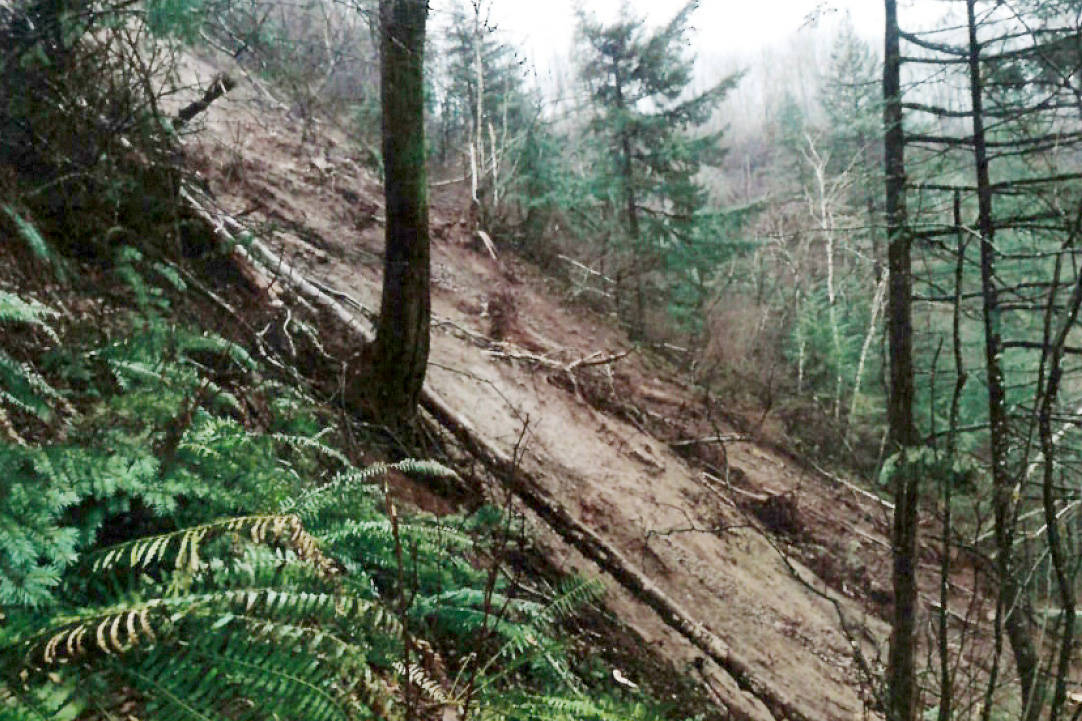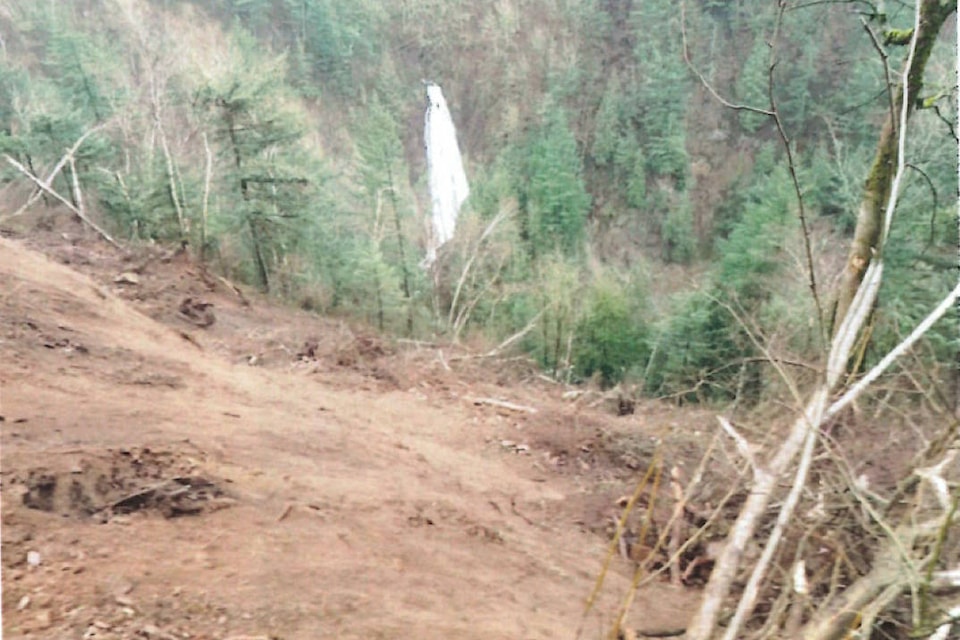The explosion that set off a landslide in January on Sumas Mountain was triggered by a blasting company that was also partially responsible for another slide last year in Chilliwack.
In January, Lafarge hired a contractor to set off a blast on the eastern edge of its Sumas Mountain quarry.
The aim was to lower a bench and make it less likely that a sliver-like ridge would be created after gravel extraction.
But the resulting explosion was larger than anticipated and sent a cascade of rock, wood and other debris down what had been a forested slope, according to documents obtained following a freedom of information request.
No homes were affected and the debris stopped short of a creek at the bottom of the slope, but the landslide left a large scar on the mountain clearly visible from Highway 1.
The documents identify the contractor as Western Explosives, which also operates its own quarry less than 15 kilometres away from the Lafarge site on Vedder Mountain in Chilliwack.
In February of 2016, following blasting at that quarry, rock slid down the north slope of Vedder Mountain and forced the evacuation of three homes below.
Following that incident, Western Explosives owner Bryan Kirkness initially put most of the blame for the incident on soggy weather conditions, and even suggested a minor earthquake on Vancouver Island may have played a part.
But a written report later contradicted him, saying “Overloading the top of the slope with blast rock material while blasting was taking place about 10 metres to the south were likely the main contributing factors.”
Kirkness said it was the first slide on the north slope in the 15 years that Western Explosives had operated the quarry.
In the Abbotsford slide, an inspection report obtained by The News stated that “excessive energy” sent debris outside of the designated “safe zone” and created a landslide “that wiped out several trees and vegetation and created a potential disturbance to the creek below the slope.”
An email from a conservation officer called to the scene said that he had been told by the City of Abbotsford’s environmental co-ordinator that the slide was “caused by an ‘accidental explosion,’ that occurred in the rock quarry, when an employee placed too much powder in a charge.”
A subsequent “minor incident report” from Lafarge said the possibility of a small landslide had been discussed prior to the blast.
“The potential of some rock relieving to the east was recognized and Western Explosives did not seem overly concerned,” the report says. Western Explosives asked about what lay below the area and was told “the only concern to Lafarge was the creek.”
The blast then proceeded, with “more rock than expected” going down the slope and knocking down “sporadic trees and woody debris and the thin layer of granular overburden that laid on the east slope.”
Two unidentified people investigated and found the slide stopped 70 metres short of the creek and that there didn’t seem to be a risk of another slide.
Lafarge then pulled material off of the top of the ridge to decrease the likelihood that rain would wash more rock down the slide area.
Kirkness did not respond to requests for comment.
After the slide, the province instituted a stop-work order, with blasting prohibited following a further review.
The Ministry of Energy, Mines & Petroleum Resources says its investigation is continuing.
Related stories:

